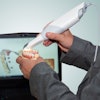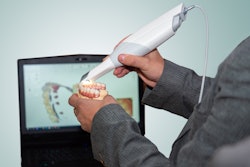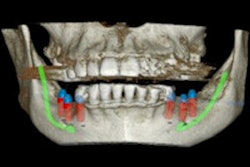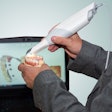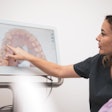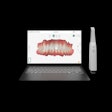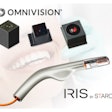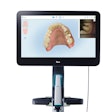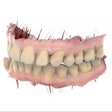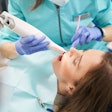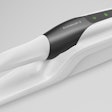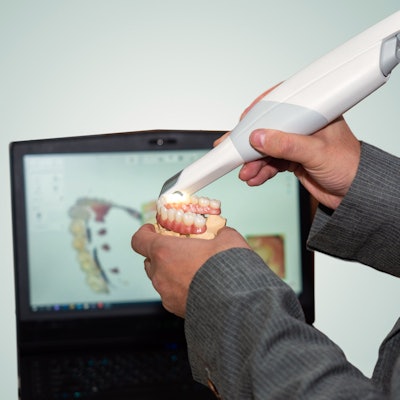
A number of factors can influence the accuracy of an intraoral scan, including the color of a scanner's light. The use of a blue-light scanning mode resulted in significantly more accurate scans in a study published on February 2 in the Journal of Prosthodontics.
The team of Turkish researchers compared the accuracy of intraoral scans under a variety of conditions, including with an overhead light on and off as well as with blue and white scan modes. To the authors' surprise, all factors had a significant effect on scan accuracy.
"Lighting conditions are effective in assessing the trueness of the digital impressions made with an [intraoral scanner] device," wrote the group, led by Dr. Merve Koseoglu from the prosthodontics department at Sakarya University. "[Room light and blue mode] conditions are recommended for taking a digital impression."
The study included 20 fully dentate volunteers who were students at the university's dental school. The number of participants was chosen based on an analysis of the number needed to reach statistical significance.
A prosthodontist obtained working casts from the volunteers, and the casts were digitized using a 3Shape dental laboratory scanner. The STL files were used as a reference for accuracy.
An additional two prosthodontists took full-arch digital scans of the volunteers under four different conditions:
- With an overhead light turned on and a scanner with blue light
- With an overhead light turned on and a scanner with white light
- With an overhead light turned off and a scanner with blue light
- With an overhead light turned off and a scanner with white light
The prosthodontists used a Medit i500 intraoral scanner for the digital impressions. When the overhead light was on, it produced a brightness of about 1000 lux, which is roughly the same as the lighting found at a supermarket.
The authors used a digital software program to compare differences between the digital scans and the digitized casts. They found significant differences between all four scan conditions.
The scans taken with the overhead light turned on and in blue-light mode produced the least amount of discrepancy with the reference scan. This was followed by the scans taken with the room light on and in white-light mode.
The scenarios with the overhead light turned off didn't perform as well in the study. But even in these scenarios, the blue-light scan mode outperformed the white-light scan mode.
"The results of this study showed that trueness of the [intraoral scanner] device was better in the blue-light mode than the white-light mode at both ambient light conditions," the authors wrote.
Scan accuracy is important because an intraoral scan is the first step in a CAD/CAM digital workflow, the authors noted. The type of scanner, postprocessing algorithms, and ambient light can all affect scan accuracy.
Based on their findings, the authors recommended taking intraoral scans in a brightly lit room with blue-light mode. They hope future studies repeat their experiment while also evaluating for precision, a metric they weren't able to include in their own analysis.
"It is necessary for future studies to investigate the precision and trueness of different [intraoral scanner] devices at different light conditions," they wrote.
